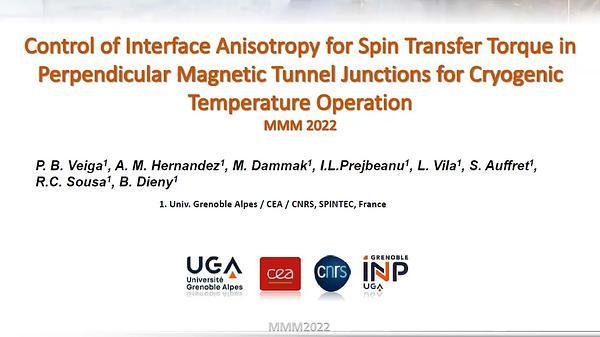Would you like to see your presentation here, made available to a global audience of researchers?
Add your own presentation or have us affordably record your next conference.
The application of Nd-Fe-B magnet with substitution of Nd by cheap and abundant Ce elements is seriously limited due to the intrinsically inferior magnetic properties of Ce-Fe-B 1-3. Recently, dual-main-phase (DMP) sintered magnet was successfully developed 4, which allowed special distribution of heterogeneous main phases (Ce-rich and Nd-rich R2Fe14B main phases), contributing remarkably to balance the utilization of high-abundance rare earths and the performance. This work demonstrated a novel design of quasi-trivalent DMP Ce magnets using the strategy of two main phases with giant magnetic anisotropy energy gap (MAEG). The maximum energy product of DMP Ce magnet with 40% weight percentage of Ce over total rare earth is optimized to be 40.57 MGOe, as shown in Fig. 1, which is the energy-product record. The superior magnetic properties are closely corelated to the average valence of Ce. The average valence of Ce in the DMP magnets was quasi-trivalent, proved by XPS spectroscopy, as shown in Fig. 2, which was lower than that in the single-main-phase magnets.
Furthermore, with an isostructural heterogenous configuration in the DMP magnets could manipulate electron migration and induce magnetic Ce3+ in the main phase, thereby improving the remanence. It was possible to control the Ce valence for the design of high-performance Ce magnets using main phases with diversity of MAEG. This would undoubtedly provide ideas for researching and developing new rare earth materials with a synergistic composition and structure. Compared with Nd-Fe-B magnets, the new quasi-trivalent DMP Ce magnets would save 30-40% Nd and remarkably reduce the production cost of magnets with much higher Ce content.
References:
1 J. F. Herbst, Rev. Mod. Phys. 63, 819 (1991).
2 D. Li, Y. Bogatin, J. Appl. Phys. 69, 5515 (1991).
3 S. X. Zhou, Y. G. Wang, R. Høier, J. Appl. Phys. 75, 6268, (1994).
4 M.G. Zhu, W. Li, Y.K. Fang, et al. J. Appl. Phys. 109, 07A706 (2011).

Fig. 1 Demagnetization curve of the DMP-Ce-0.4 magnet at room temperatures. The energy-product record of 40.57 MGOe is reported for DMP-Ce-0.4 magnet.

Fig. 2 Semi-quantitative fitting of the Ce 3d core-level spectra for the DMP-Ce-0.4 magnet using the ordinary least squares approach, where the standard XPS spectra of Ce3+ and Ce4+ were sourced from the Avantage software database.
